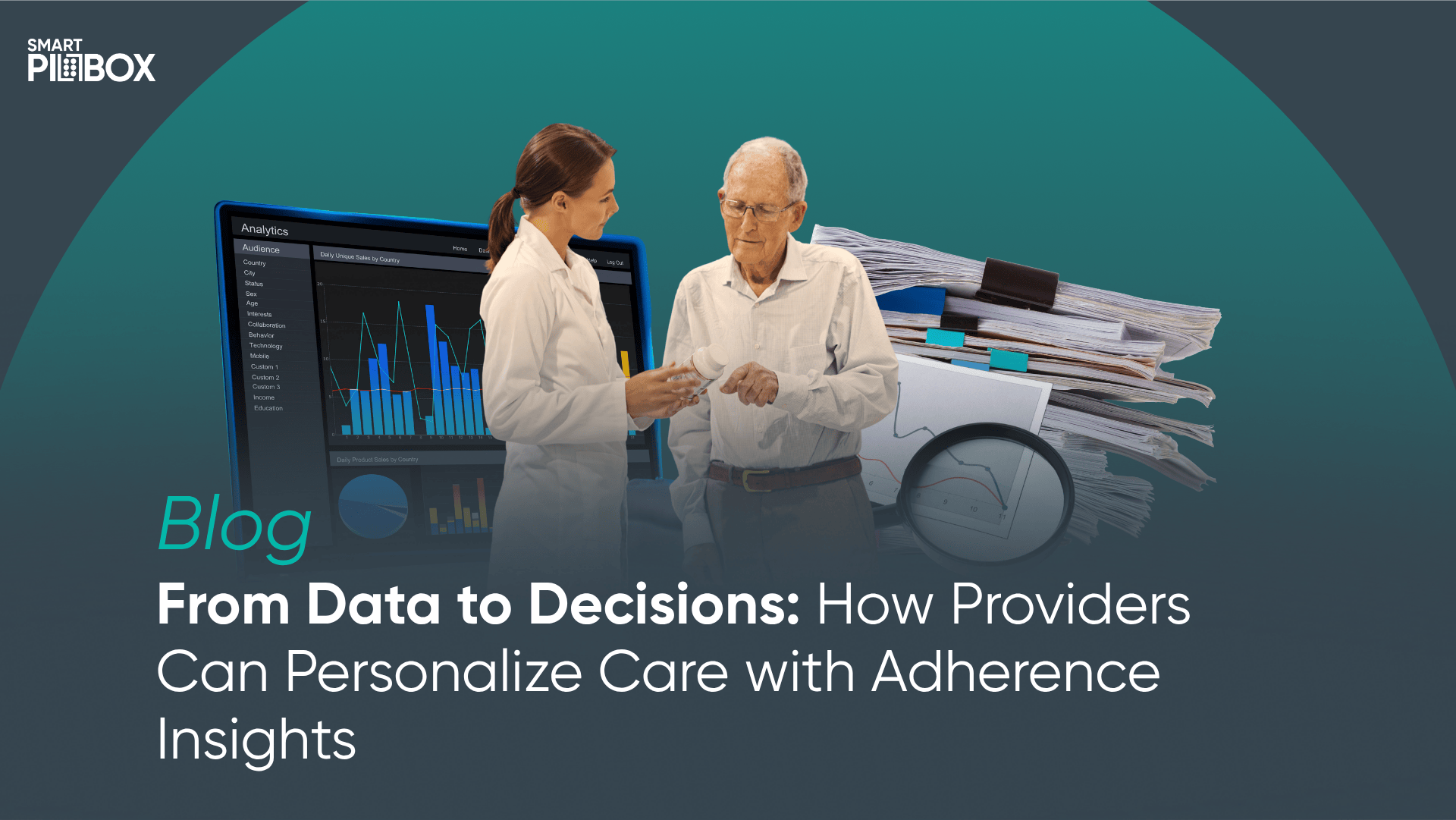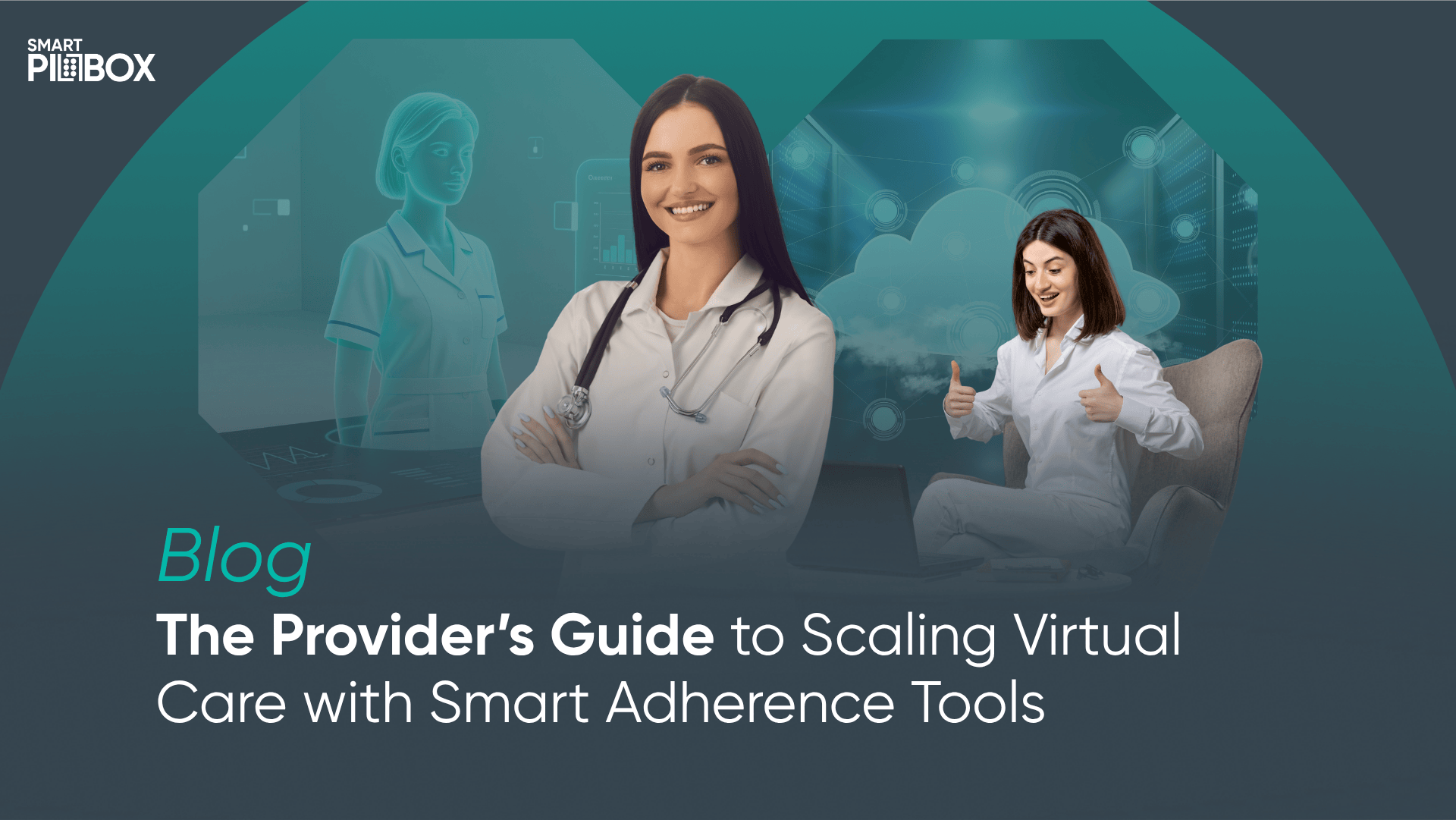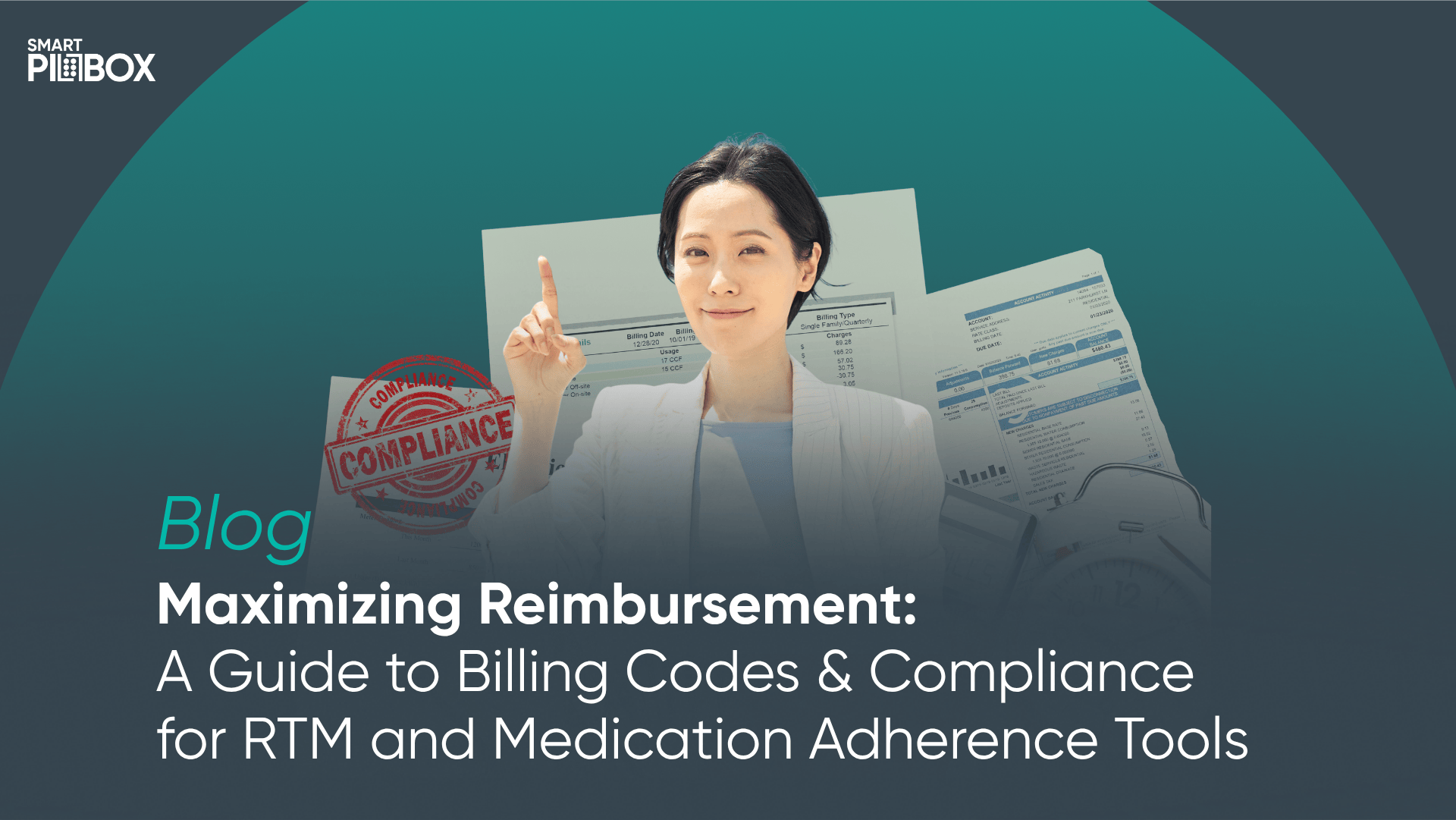From Data to Decisions: How Providers Can Personalize Care with Adherence Insights

Imagine two patients sitting in your waiting room.
Both have diabetes. Both are prescribed the same medication. Both visit you regularly. Yet one is thriving, and the other keeps showing erratic blood sugar levels. On paper, they look identical—but their daily habits tell a completely different story.
This is where medication adherence tracking changes everything.
In modern healthcare, personalization is no longer a luxury—it’s the expectation. Patients want care that fits their lives, not the other way around. And for providers, the key to delivering that kind of care lies in one thing most people overlook: adherence data.
Let’s unpack how understanding and using patient adherence data can help you build personalized care plans that actually work in real life—not just on paper.
Why One-Size-Fits-All Care No Longer Works
Think about how medicine used to be practiced. Providers prescribed a standard treatment, gave instructions, and hoped patients followed them. But hope is not a strategy.
Today’s patients are juggling multiple responsibilities, stressors, and medications. Many struggle to take their pills consistently—not because they don’t care, but because life gets in the way.
According to the World Health Organization, nearly 50% of patients with chronic conditions fail to take their medications as prescribed. That non-adherence contributes to up to $300 billion annually in avoidable healthcare costs in the U.S.
If we know this much, why are we still waiting for symptoms to show up before adjusting care?
With the right tools—like remote therapeutic monitoring (RTM) and adherence-tracking systems—providers can now anticipate problems before they turn into hospital visits.
The Power of Seeing What Happens Between Appointments
Every provider knows the frustration of the “in-between.”
You send a patient home with clear instructions. You schedule a follow-up in three months. And then… silence.
You don’t know whether they’re taking their meds, following dietary advice, or struggling to stay motivated. You only find out when they’re back in your office—sometimes with worsened symptoms.
That gap between visits is where most adherence issues begin.
By using medication adherence tracking, providers can now stay connected to what happens in real time. Systems like Smart Pillbox automatically log when medications are taken, missed, or delayed. These small data points paint a much bigger picture of patient behavior.
And when you combine those insights with RTM for providers, it becomes possible to personalize care for every single patient.
Turning Data Into Actionable Insight
Let’s be clear—data alone isn’t magic. What matters is how you interpret it.
Imagine having a dashboard that shows not just who missed a dose, but when and why. You might notice a pattern: a patient always forgets their evening medication on weekends.
Instead of simply scolding them, you can ask questions. Do they travel on weekends? Are they sleeping later? Could they use a portable pill reminder?
That’s the power of personalized care plans—you tailor the intervention to the person, not the diagnosis.
Patient adherence data helps you go beyond assumptions. It gives you context. It gives you empathy. It lets you move from saying, “You need to do better,” to “Here’s how we can make this easier for you.”
The Role of Remote Therapeutic Monitoring (RTM)
RTM is changing how providers manage chronic conditions.
Unlike Remote Patient Monitoring (RPM), which focuses on physiological metrics like blood pressure or glucose, remote therapeutic monitoring (RTM) tracks non-physiological data—like medication adherence, therapy engagement, and patient-reported outcomes.
This gives providers a direct window into treatment consistency.
Let’s say you’re managing patients with chronic pain, asthma, or hypertension. By using RTM, you can:
-
Track whether patients are taking medications consistently.
-
Receive real-time alerts when doses are missed.
-
Identify adherence trends that signal worsening control.
-
Adjust treatment plans before complications arise.
The best part? RTM is reimbursable through CMS billing codes, which means improving adherence doesn’t just benefit patients—it’s financially sustainable for clinics too.
Building Personalized Care Plans with Adherence Data
Now let’s get into the “how.”
Here’s a simple framework for using medication adherence tracking to design smarter, more human-centered care plans:
1. Segment Patients by Adherence Behavior
Start by analyzing adherence data over a few weeks. Who’s consistent? Who’s occasionally missing doses? Who’s struggling most?
This segmentation helps you allocate resources effectively. A highly adherent patient might just need encouragement. A non-adherent one might need closer monitoring or extra reminders.
2. Identify Barriers, Not Just Patterns
Numbers tell you what’s happening—but conversations tell you why. Once you identify an adherence issue, reach out to understand the root cause.
Is it forgetfulness? Cost? Side effects? Transportation issues? Each reason calls for a different solution.
For instance, if cost is the issue, you can connect the patient with assistance programs. If forgetfulness is the problem, you can introduce them to provider tools for patient engagement like automated reminders or refill alerts.
3. Integrate RTM Insights Into Chronic Care Management
When it comes to chronic care management, personalization is key. RTM data allows you to see how each patient is responding to therapy between visits.
If a patient with COPD reports consistent inhaler use but still has flare-ups, you can review their technique. If someone with diabetes consistently misses evening doses, you can explore whether their schedule or medication timing is causing challenges.
These micro-adjustments—rooted in real behavior—make a big difference in outcomes.
4. Close the Loop with Feedback and Motivation
Patients who see their progress stay motivated. Sharing adherence insights in a friendly, non-judgmental way helps them feel part of their own success.
Instead of saying, “You missed your medication three times last week,” try, “You took your medication 85% of the time last week—that’s progress! Let’s see how we can make it 95%.”
That’s how provider tools for patient engagement turn data into connection.
Why Adherence Data Is the Future of Chronic Care
Chronic conditions like hypertension, diabetes, and COPD make up 90% of U.S. healthcare spending, according to the CDC. The difference between control and crisis often comes down to adherence.
With RTM for providers, you no longer have to rely on patient self-reporting or guesswork. Instead, you can monitor adherence in real time, measure engagement objectively, and intervene early.
The result?
-
Fewer hospitalizations.
-
More stable chronic disease management.
-
Happier, more empowered patients.
It’s not about technology replacing empathy—it’s about technology empowering empathy.
The Human Side of Personalized Care
There’s something deeply human about helping patients stay on track. Behind every dose missed is a reason—a bad day, a busy week, a forgotten routine.
When you use patient adherence data the right way, you stop seeing non-compliance as failure. You start seeing it as feedback.
For example, if an elderly patient misses doses because their pillbox is confusing, switching to a smart device with reminders solves the problem. If a younger patient skips meds due to side effects, adjusting the prescription or counseling them on expectations can help.
Personalized care doesn’t mean adding more work—it means directing your effort where it matters most.
Tools That Make It Easier
Providers today have access to a growing number of provider tools for patient engagement that make adherence tracking seamless:
-
Smart Pillbox for real-time medication tracking and reminders.
-
RTM-enabled apps that log adherence data automatically.
-
Telehealth dashboards that integrate with EHR systems.
-
AI-driven alerts that flag at-risk patients before problems escalate.
These medication adherence tracking tools act as your silent partners, helping you understand patients beyond clinic walls.
According to…
According to a 2023 report from the Journal of Medical Internet Research, integrating adherence data into care plans led to a 19% improvement in patient outcomes for chronic disease programs using RTM technology. Clinics that implemented real-time monitoring also saw a 12% reduction in hospital readmissions, proving that digital insights can drive tangible results.
That’s the difference between guessing and knowing. Between reacting and preventing. Between generic care and truly personalized care.
The Takeaway: Data That Cares
In the end, personalized care plans aren’t built from lab results alone—they’re built from understanding how people live their daily lives.
Medication adherence tracking gives providers the visibility they’ve always needed, and remote therapeutic monitoring (RTM) turns that visibility into action. When you combine data with empathy, you get care that’s predictive, proactive, and deeply personal.
At Smart Pillbox, we believe the future of care lies in these small, consistent connections—the reminders, the insights, the gentle nudges that keep patients on course.
If you’re ready to see how RTM and adherence data can help your clinic deliver smarter, more personalized care, schedule a call with our team today.
Together, let’s turn information into impact—and make healthcare more human, one patient at a time.


